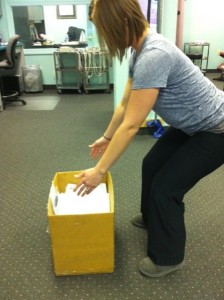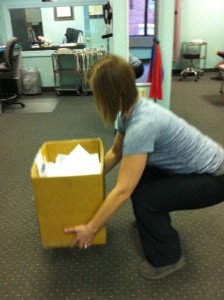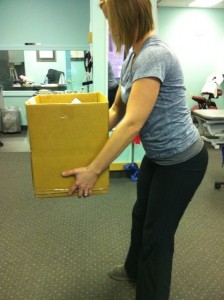Menu Planning Tips: Modify your traditional holiday menus and recipes to reduce fat, cholesterol, and calories.
•
Original Menu
3 ½ ounces roast duck
½ cup stuffing
½ cup broccoli with hollandaise
sauce
½ cup jellied cranberry sauce
1 medium crescent roll
1 slice pecan pie
TOTAL CALORIES = 1205
TOTAL FAT = 55 grams
•
Leaner Menu
3 ½ ounces roast turkey breast
½ cup rice pilaf
½ cup broccoli with lemon juice
½ cup fresh cranberry relish
1 fresh roll
1 slice pumpkin pie
TOTAL CALORIES = 730
TOTAL FAT = 21 gra
A typical holiday menu:
- 3 ½ ounces roast duck
- ½ cup stuffing
- ½ cup broccoli with hollandaise sauce
- ½ cup jellied cranberry sauce
- 1 medium crescent roll
- 1 slice pecan pie
- TOTAL CALORIES = 1205
- TOTAL FAT = 55 grams
A leaner holiday menu:
- 3 ½ ounces roast turkey breast
- ½ cup rice pilaf
- ½ cup broccoli with lemon juice
- ½ cup fresh cranberry relish
- 1 fresh roll
- 1 slice pumpkin pie
- TOTAL CALORIES = 730
- TOTAL FAT = 21 grams
Remember to go easy on the following foods:
- Nuts
- Chips
- Crackers
- Dips
- Olives
- Eggnog
- Stuffing
- Gravy
- Fatty deli meats
- Candy, cakes, pies, cookies
- Alcohol
Celebration Strategies:
- Be realistic. Trying to lose weight during the holidays may be a self-defeating goal. Striving to maintain your weight, however, is a reasonable expectation.
- Forget the “all or nothing” mindset. Depriving yourself of special holiday foods or feeling guilty over a particular food choice are not part of a holiday eating strategy – and certainly not part of the holiday spirit!
- Have fun! Sharing food is an important way to spread holiday cheer. Enjoying a traditional meal or celebrating with family and friends need not destroy the healthy food habits you have nurtured all year.
- Get enough rest.
- Drink lots of water.
- Get at least 30 minutes of brisk exercise every day to reduce stress and burn calories (try it before breakfast).
- Don’t skip meals, especially breakfast.
- Eat slowly – put your fork down between bites.
- Chew gum while preparing food and cleaning up to curb tasting and snacking.
- Keep a daily food/calorie diary – enter every taste and snack you take.
- Resist the urge to bake as gifts, instead make jellies, barbecue sauces, etc.
Snacking During the Busy Holiday Season:
With all the preparations and celebrations, you might be too busy to eat regular meals. Take some time to learn how tasty, convenient snacks and appetizers can fill hunger gaps, contribute important nutrients, and add enjoyment to your holiday eating.
- Try these portable snacks when you travel:
- Make a trail mix of nuts, raisins, and pretzel chips
- Tote some of your favorite ready-to-eat cereal in a plastic bag
- Stow a couple of breadsticks and a crisp apple
- Pack a handful of graham crackers and small can of fruit juice
- Wrap up a mini-bagel spread with peanut butter
- For home, try stocking up on these snacks:
- Raw broccoli florets
- Red and green pepper strips
- Zucchini circles
- Cucumber wedges
- Carrot and celery sticks
- Low-fat, low-sodium cheeses
- Lean, low-sodium deli meats
- Fruit
- Yogurt
- Juices
- Assorted bread, crackers, graham crackers, pretzels, and breadsticks
- Cook a large batch of chili and freeze individual portions, reheat as needed
- Snack ideas for company
- Top reduced-fat crackers with your favorite hors d’oeuvre combinations
- Serve hummus with pita wedges
- Make fruit kabobs with pineapple chunks, melon balls, and ripe strawberries
- Arrange colorful vegetables on a platter with a tangy yogurt dip
- Place bowls of homemade snack mix on convenient tables
- Create a cheese board with some new lower-fat varieties and an assortment of crackers and breadsticks
- For a sweet treat:
- Slices of angel food cake drizzled with raspberry sauce
- Non-fat and lower-fat cookies
- Dried fruit and nuts arrangement
- Serve small portions of special holiday sweets
Written by Julie Katz, Registered Dietitian- Baltimore, MD




